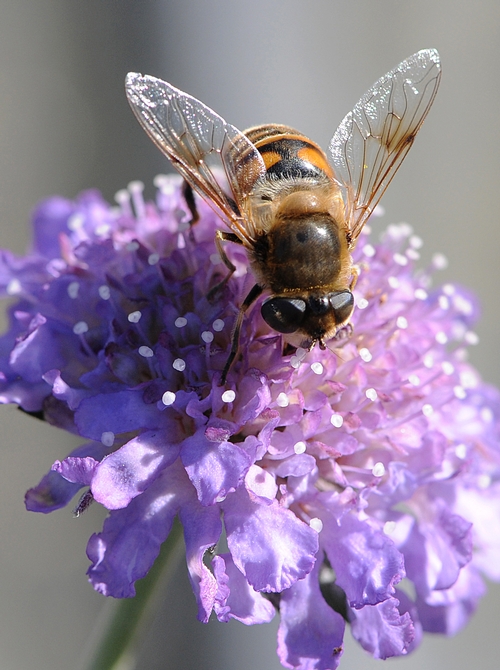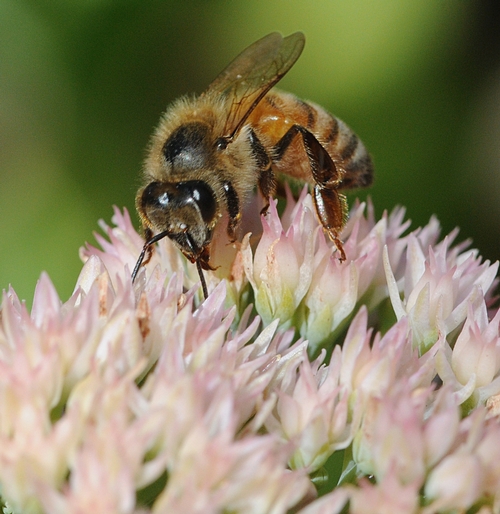"If it looks like a duck, quacks like a duck, and walks like a duck, it's probably a duck," or so the saying goes.
But if it looks like a honey bee, moves around on blossoms like a honey bee, and feeds on nectar and pollen like a honey bee, it may not be a honey bee.
It could be a flower fly or syrphid in the Syrphidae family.
The syrphids suffer from multiple cases of mistaken identity.
One of the syprhids commonly mistaken for a honey bee (Apis mellifera) is the drone fly (Eristalis tenax).
An imposter!
We spotted a drone fly--the first we've seen this year--on Feb. 5 in Tomales, Marin County. It was nectaring a pincushion flower (Seabiosa columbaria) at the Mostly Natives Nursery.
"There's a bee!" someone exclaimed.
It wasn't. It was a drone fly.
In its larval stage, it's known as a rat-tailed maggot. You'll see it in stagnant water, such as in ditches, ponds and drains. It feeds on stagnant rotting organic material.
In its adult stage, it moves from flower to flower, sipping nectar and pollinating flowers. Watch it hover and you know it's not a honey bee. Look at its two wings, and you know it's not a honey bee (the honey bee has four).
Lots of other differences, too.
It's a good pollinator, but a honey bee, it is not.
Attached Images:

Drone Fly

Honey Bee